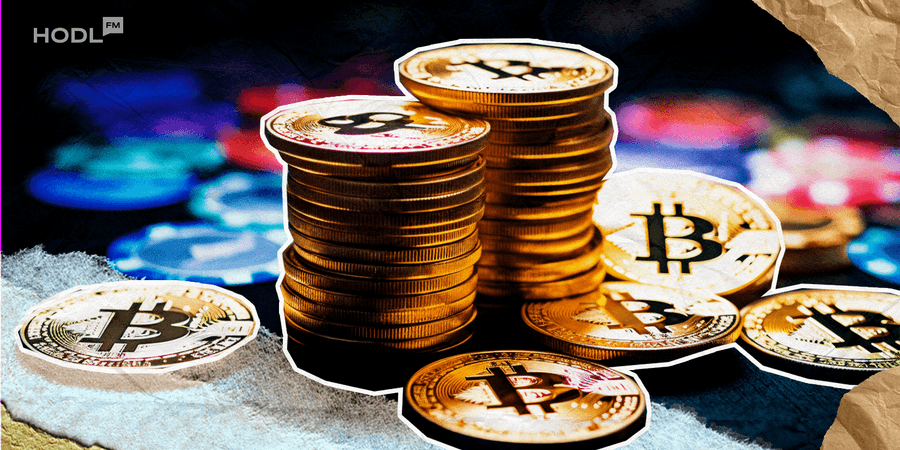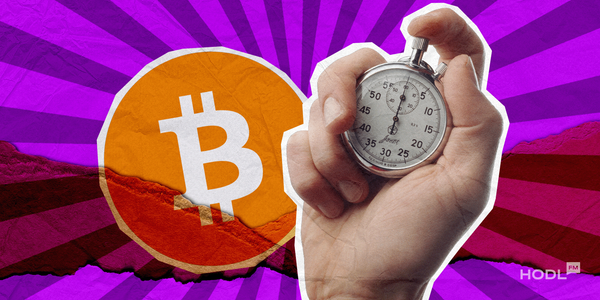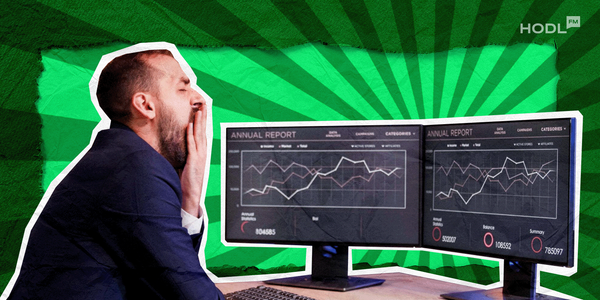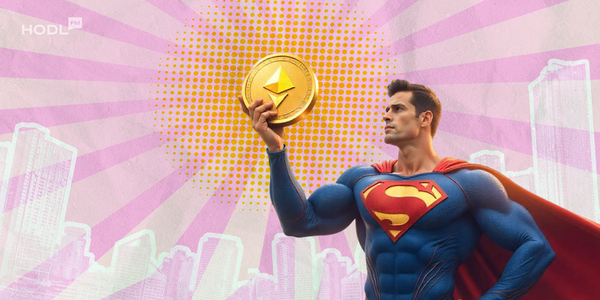Ever played “Whack-a-Mole? Immediately when you thought you had the entire word glossary on your fingertips, a new term popped up.
The crypto industry constantly bombards us with new terms, innovations and new concepts. If you couldn’t “whack-a-mole’, lets “whack-a-word”.
You Might Also Like: Are Stablecoins Securities?

Stablecoins
We have lived with cryptocurrencies long enough to come to terms with their frequent volatility. However, Cardano Founder Charles Hoskinson and Dan Larimer could not accept the shifting goalposts of cryptocurrencies. As a result, they invented the first stablecoin in 2014 – BitUSD.
A stablecoin is a cryptocurrency whose value is pegged to the relatively stable value of another asset. For example, BitUSD was pegged to the value of the US dollar. Tether (USDT), which is one of the most popular stablecoins pegs its value to the US dollar on a 1:1 ratio.
Are you tired of watching the nerve-wracking cryptocurrency space, which I often liken to a thrilling circus perfomance? Circuses can be astounding at terms, and things could go wrong at any moment.
However, this isn’t to say things are quite stable for stablecoins all the time. Despite pioneering the era of stablecoins, BitUSD lost its peg to the US dollar and now floats around at 80 cents.
Lastly when I made a pun to save my life was in 2022 after Terra (LUNA) broke up with loyal fans, literally broke down from $120 to only a few dollar cents.

I didn’t even know what a pun was, but armed with a good example, definitely, I was going to make one. So they said “ Why did the Clown go to the doctor? Because he was feeling funny?”
“Why did the stablecoin go to therapy? Because it lost its peg and couldn’t maintain a stable relationship” I reiterated. At least had they been in crypto, that pun would have made hot laugh but unfortunately, my pun competitors knew nothing about stablecoins. As such I dedicate this section to teaching all the pun artists about stablecoins in this expert guide to stablecoins.
Types of Stablecoins
Stablecoins come in four main shapes:
- Algorithmic stablecoins
- Fiat-backed stablecoins
- Commodity-backed stablecoins
- Cryptocurrency-backed stablecoins
Let’s discuss each of the four types below.

Algorithmic Stablecoins
Algorithmic stablecoins use a set of sophisticated algorithms to maintain their price peg. Until 2022, TerraUSD (UST) was the largest algorithmic stablecoin in the industry with a market capitalization of $18.7 billion as of May 5 2022. The stablecoin lost its algorithmic price peg to the US dollar following a wave of panic selling that saw the TerraUSD’s price readjust to $0.01. As a result, algorithmic stablecoins have frequently fallen under criticism.
Commodity-collateralized Stablecoins
Commodity-backed stablecoins are a less popular type of stablecoin. The value of a commodity-backed stablecoin is pegged to one or more commodities. Often, holders can redeem the value of their stablecoin holdings on demand. A rule of thumb for this kind of stablecoin is ensuring their circulating supply mirror that of their parent commodity.
Fiat-backed Stablecoins
Fiat-collateralized stablecoins like the Tether(USDT) are the most popular type of stablecoins. The value of a fiat-stablecoin is the same as its backing currency. However, the currency reserves backing the stablecoin resides with a regulated financial institution. However, a fiat-backed stablecoin can have its peg across several currencies.
Crypto-collateralized Stablecoins
Cryptocurrency-backed stablecoins are not the most reliable type of stablecoins. However, they can also maintain a stable price despite the high volatility of cryptocurrencies. Stablecoins can peg their value to a number of cryptocurrencies, or even a portfolio of invested digital assets. However, the peg of crypto-backed stablecoins relies on sophisticated on-chain smart contracts.
8 Best Stablecoins of 2023
USD Coin
USDC has its peg on the price of the US dollar using a reserve of US dollars. The stablecoin has grown in popularity due to its transparent model, frequent audit reports and regulatory compliance. USDC plays a central role in the DEFI ecosystem as a payment coin, trading asset and store of value.
Tether (USDT)
USDT is one of the most popular stablecoins. The original name of the USDT coin was the Realcoin when it first appeared in 2014. USDT is pegged to the US Dollar at a 1:1 ratio so as to maintain the USD’s target price. The stablecoin serves a wide market of cryptocurrency users as a liquidity provider and trading utility.
TrueUSD (TUSD)
TrueUSD is a stablecoin whose price peg is backed by US dollars residing in third-party trust accounts. The stablecoin places high emphasis on regulatory compliance, transparency and decentralization. Just like USDC and USDT, TrueUSD is a sound trading and DEFI utility.
More Info: USDT, USDC, and BUSD – Which one is the best stablecoin?
DAI
DAI is a unique decentralized stablecoin whose value is not backed by any fiat currency. Instead, DAI maintains a stable price through smart contracts, liquidity protocols, and DeFi lending and borrowing chains. The asset’s value is possible through smart contracts because the contracts lock up collateral in Ethereum-based assets. It is worth mentioning that the DAI stablecoin is an important part of the MakerDAO DEFI ecosystem.
sUSD (Synthetix USD)
sUSD is a synthetic stablecoin within the Synthetix network. The stablecoin is not backed by fiat currency directly but is created as a synthetic asset. sUSD is applicable across trading, yield farming and synthetic asset creation within the Synthetix ecosystem.
Ampleforth (AMPL)
Ampleforth is unique among stablecoins, as it adjusts its supply daily to maintain its price target, which can lead to price volatility. It’s not backed by traditional reserves but uses a novel approach to achieve stability. AMPL is applicable across a wide array of DEFI functionalities, cross-border payments and as a store of value.
Terra (LUNA and UST)
TerraChain is the parent blockchain of the TerraUSD (UST) stablecoin which lost its peg to the US dollar in 2022. The UST stablecoin was sort of a revolution in the crypto industry, mainly because of its algorithmic mechanism for collateralizing itself to the value of the US dollar. The collapse of the Terrachain led not only to the de-pegging of the UST stablecoin but also to the liquidation of everyone who had bought Terra (LUNA) coins.
Read more: Terra (LUNA) Classic Price Prediction 2023-2030
Use Cases and Advantages
| Cross-Border Payments | Stablecoins are increasingly used for cross-border payments due to their near-instant transaction speed and lower costs compared to traditional banking systems. They provide a more efficient way to send money globally without the volatility associated with cryptocurrencies like Bitcoin. |
| Hedging Against Cryptocurrency Volatility | Crypto traders and investors use stablecoins as a safe haven to mitigate risks during periods of high cryptocurrency price volatility. They can quickly move their funds into stablecoins to preserve their capital and re-enter the market at a more favourable time. |
| DeFi Applications | Stablecoins play a central role in decentralized finance (DeFi) platforms. They provide a stable unit of account, a medium of exchange, and a store of value within the DeFi ecosystem. Users can earn interest, borrow, lend, and trade using stablecoins without exposure to volatile assets. |

Advantages
Low Volatility
Stablecoins are designed to maintain a stable value, often pegged to a fiat currency like the US dollar. This stability reduces the risk associated with price fluctuations, making them a reliable tool for various financial activities.
Accessibility
Stablecoins are accessible to anyone with an internet connection, enabling global participation in digital financial markets. They offer financial services to unbanked and underbanked populations who may not have access to traditional banking.
Transparency
Many reputable stablecoin projects publish regular audits and reports to ensure transparency regarding their reserves and operations. This transparency builds trust among users and regulatory authorities, making them a viable option for a wide range of financial activities.
Risks and Challenges
Stablecoins provide investors with an array of use cases and benefits. However, they also come with several inherent risks and challenges.
One primary risk is the potential lack of full reserve backing, as some stablecoin issuers may struggle to maintain a 1:1 peg to the underlying assets. Incidents that result in the lack of a stable peg include under or over-collateralization. In such situations, the stablecoin might easily lose its peg and result in a lack of trust.
Regulatory concerns and uncertainties pose another challenge, with governments around the world implementing varying regulations that may impact the use and issuance of stablecoins.
Additionally, market competition, security risks and technological vulnerabilities, such as smart contract bugs or platform security breaches, can introduce risks. The reliance on centralized entities for some stablecoins also raises concerns about counterparty risk.
Lastly, market competition and dynamics can occasionally disrupt the stability of these coins, and sudden shifts in demand may impact their effectiveness as a store of value or medium of exchange. These challenges underline the need for comprehensive regulation, transparency, and ongoing monitoring to ensure the continued stability and trustworthiness of stablecoins in the cryptocurrency ecosystem. Addressing these challenges is vital for stablecoins to accomplish the entire breadth of their full future potential.
Hopefully, we have “whacked-a-term” that deserves global attention.
Conclusion
We are witnessing a powerful synergy between financial domains, decentralization and machine learning. Amid this game-changing transformation, stablecoins have the potential to redefine global payments and transactions. Stable as they are, stablecoins have the ability to inspire the uptake of cryptocurrencies and induce more confidence across the dynamic cryptocurrency world.
More Info:
- More than $100 billion missing – find out who screwed up the most in crypto in 2022
- Tether market cap blasts to the moon
Disclaimer: All materials on this site are for informational purposes only. None of the material should be interpreted as investment advice. Please note that despite the nature of much of the material created and hosted on this website, HODL FM is not a financial reference resource and the opinions of authors and other contributors are their own and should not be taken as financial advice. If you require advice of this sort, HODL FM strongly recommends contacting a qualified industry professional.






